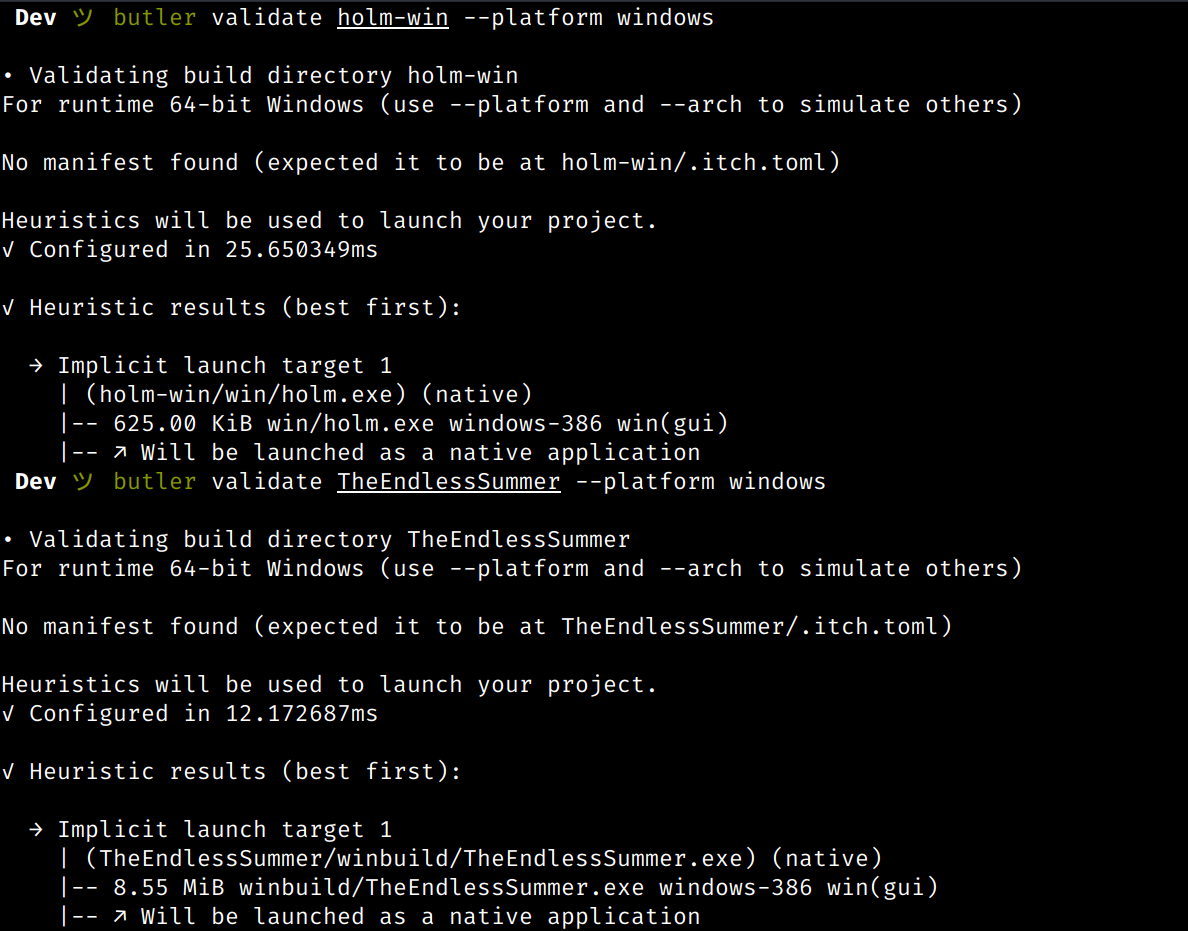I should specify that I have a .zip file for Windows with the structure Win.zip/standalone/{app.exe, .itch.toml} and another for Mac with the structure Mac.zip/standalone/{app.app, .itch.toml}. The two .itch.toml files have the correct (I think) paths, and the Mac one has one less action type than the Windows one.
Hey nick^4,
I tried to find the upload to show you how to use 'butler validate' to check your manifest, but I couldn't - the two most recent Windows uploads I can find for your account don't have an app manifest at all.
Anyway, as described on https://itch.io/docs/itch/integrating/manifest/validating-your-manifest.html - you can use butler to validate manifests (and entire builds). Ran on your two of your uploads, they give this:

My guess (unfortunately without being able to confirm since I don't know which upload you're talking about) is that you put a manifest in `standalone/.itch.toml`, whereas it should just be in `.itch.toml`.
The problem is that there is a top-level folder in your .zip file. If you were to use butler to push your uploads, you could do `butler push standalone nicknicknicknick/someproject:windows` (where `standalone` is a folder), and it would do the right thing.
TL;DR:
- Manifests need to be at the top-level
- Running `butler validate` then `butler push` is the recommended, safe way of doing things
Thanks for the reply. In fact, this is for work, so it's using another account, but I think the issue remains the same – the .itch.toml file needs to be in the top-level directory, regardless of where the .exe resides. I'll make the changes and try again (I'll post back here in a day or two with results, either way).

